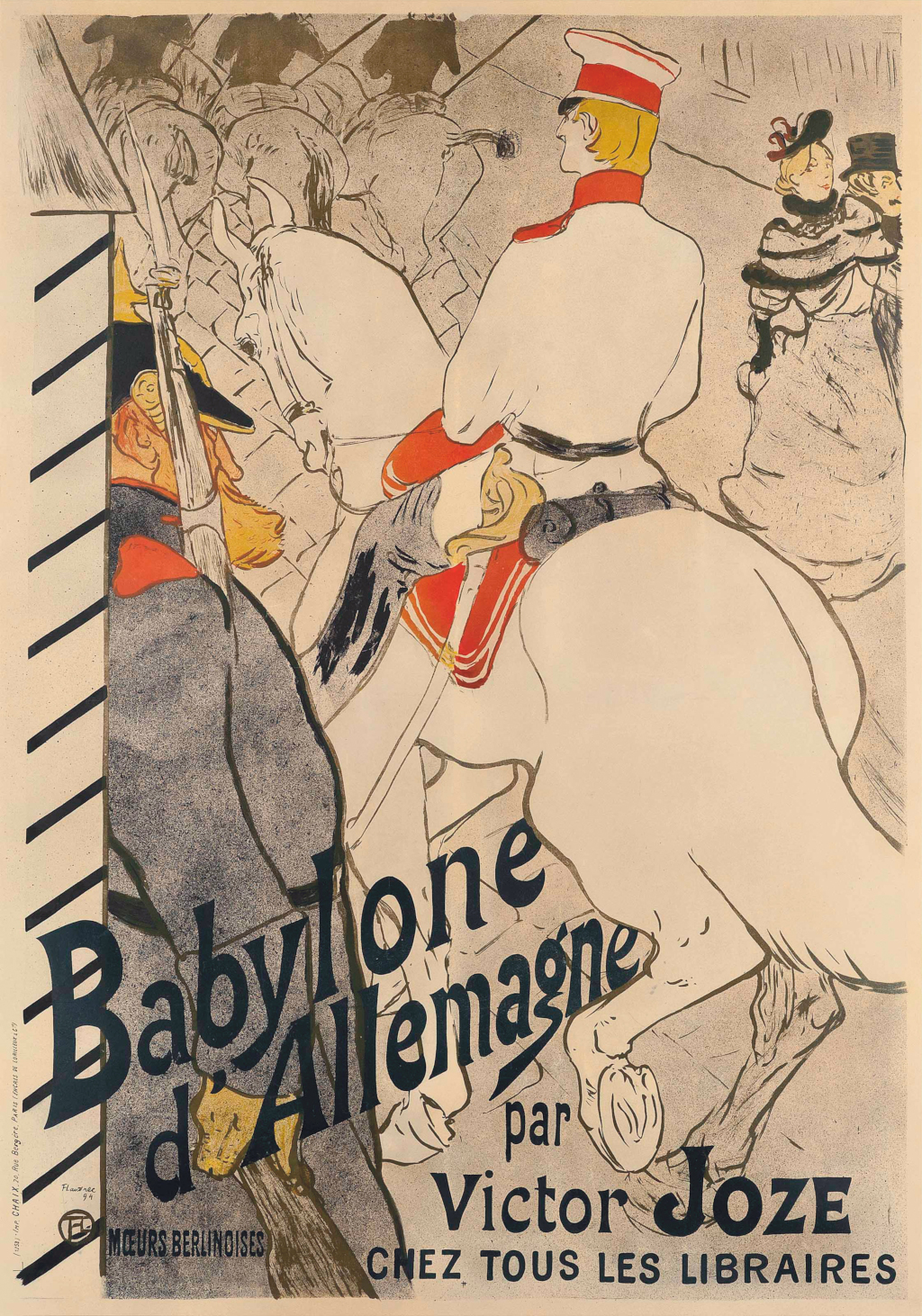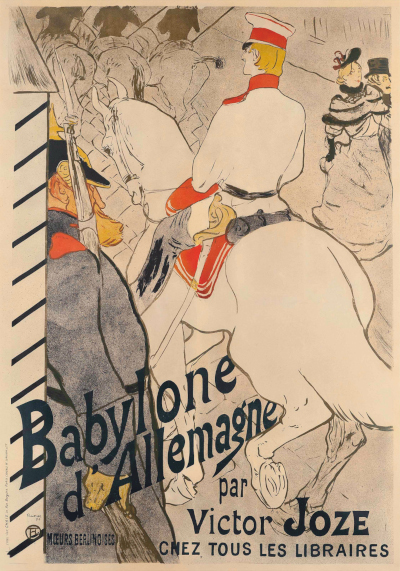Babylone d'Allemagne was a design from 1894 produced by Henri de Toulouse-Lautrec which has been re-produced many times over. It can now be found within a variety of public collections including the V&A, The Met and The Princeton University Art Museum.
The unusual composition features a horse and rider from behind and slightly to the side. A soldier stands in salute nearest us, whilst a variwty of other figures can be seen further in the distance. Toulouse-Lautrec would turn this into a lithographic print and this allowed him to produce large numbers of copies for the purposes of promotion. Most of his promotional posters would be advertisements for cabaret shows and other theatrical events but the item in front of us here refers to a novel by Victor Joze. Babylone d'Allemagne, or The German Babylon, provided a satirical commentary on life in Germany, with a particular focus on its middle classes. The content of the poster refers to the significance of military power within the Imperial empire.
One notices how a female walking by is struck by the strength of the handsome soldier on horseback, representing the positive manner in which the armed forces were seen in Germany at the time. Toulouse-Lautrec would also produce other posters for the novelist for further publications and was given creative freedom with regards how he designed these posters. Before the rise of television and radio, posters were an important means with which to advertise cultural pursuits, and with a growing middle class across Europe, it was necessary to reach out to them for products such as this. The stylish elegance of this artist's work was an ideal way to attract them.
The likes of Mucha and Toulouse-Lautrec would use illustration as a means to not only bring in regular income but also to continue to expand their oeuvres, finding a balance between commercial requests and artistic expression. Some of these posters remain highlights within the careers of both artists and also helped them to find time for other, more ambitious projects. Whilst these lithographs were produced to advertise a particular product, the large numbers that were produced actually has allowed more collectors to acquire items from this artist's career, and their limited edition status ensures valuations to still be fairly well protected.





